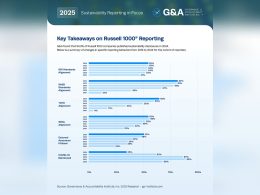Businesses investing in measures to address physical climate risks could see returns of up to 21 times their outlay, according to new analysis by CDP, the global environmental disclosure platform.
The study warns that the financial cost of climate inaction is set to climb sharply, with climate-related disasters projected to inflict $38 trillion in annual losses by 2050. In contrast, companies that measure and act on environmental risks are positioned to capture what CDP calls the “disclosure dividend” — tangible financial gains linked to climate action.
Drawing on data from nearly 25,000 corporate disclosures in 2024, CDP’s 2025 Disclosure Dividend report found that, on average, each $1 spent on physical climate risk mitigation could yield up to $81 in returns, with some firms achieving up to $21 per $1 invested. The median company reported potential opportunities worth $33.1 million, requiring an estimated $4.6 million to realise.
The findings show that 90% of large firms disclosing to CDP already have processes to identify and assess environmental risks and opportunities, or plan to do so within two years. Almost half (43%) have a climate transition plan in place. However, CDP stresses that the greatest gains come when insight leads to action. In 2024, 64% of companies identified environmental opportunities, with 12% realising $4.4 trillion in value. A further $13.2 trillion remains untapped.
Japan and Canada topped the rankings for potential financial benefits, with median identified opportunities worth $73 million and $72 million per company respectively. By comparison, U.S. firms identified $15 million and Chinese companies $10 million in potential gains.
CDP chief executive Sherry Madera said: “The economics behind disclosure are becoming clear – data-driven decisions help to manage business risk and unlock opportunity. Companies that measure and manage their environmental impacts not only future-proof their operations but also unlock tangible financial and strategic gains.”
The report underlines that corporate environmental disclosure is shifting from a transparency exercise to an economic necessity, with the strongest returns achieved when businesses convert disclosed data into decisive action.





















